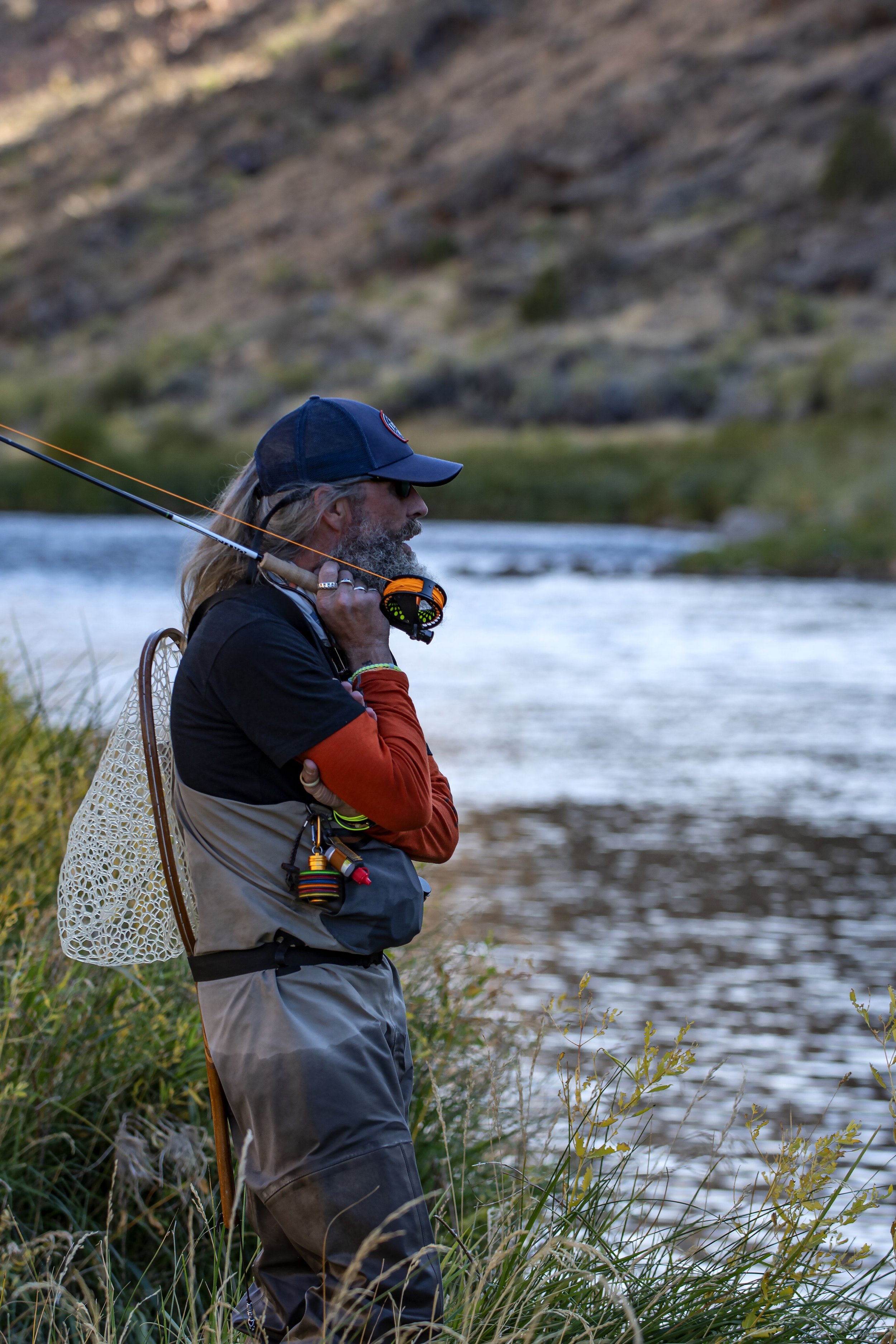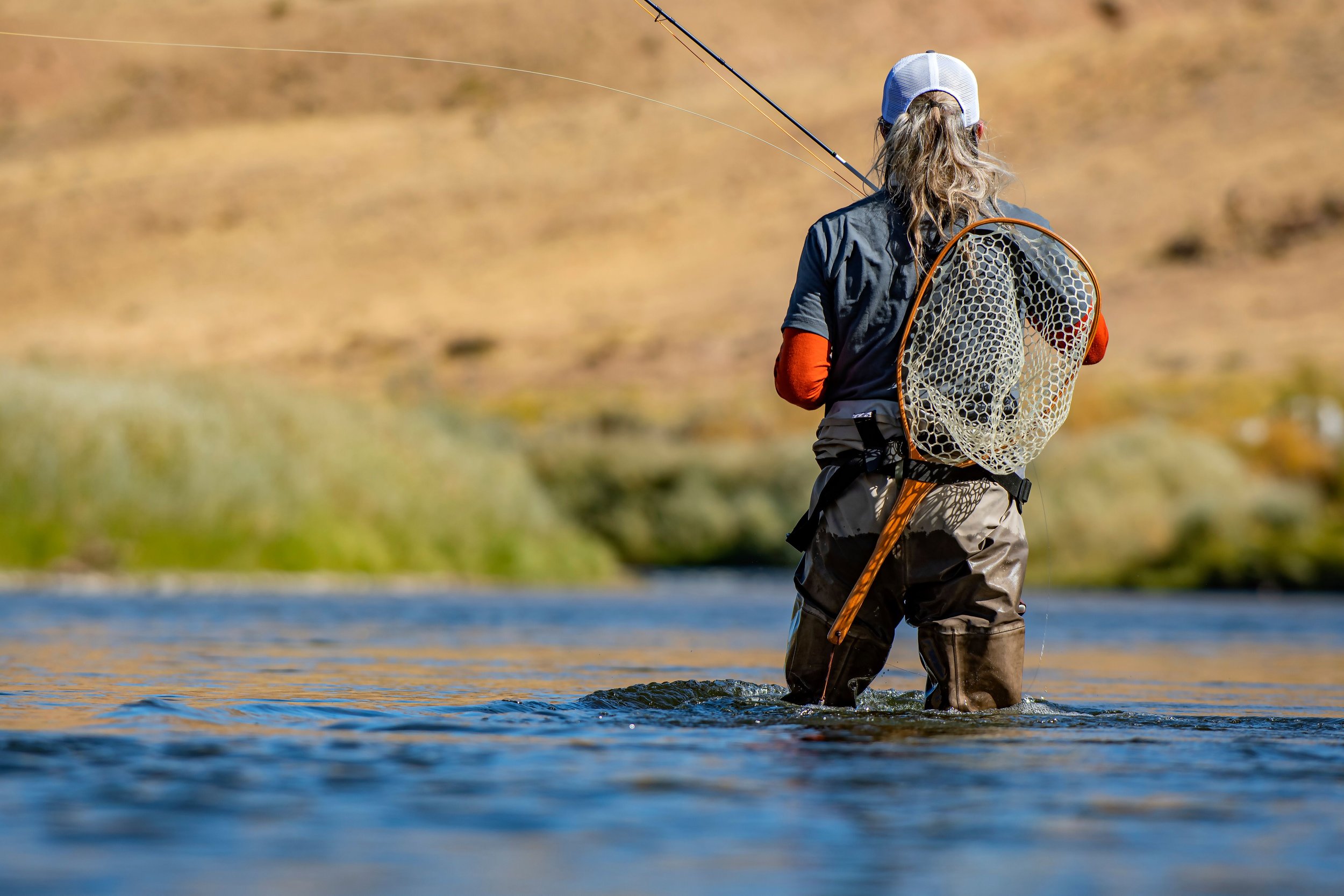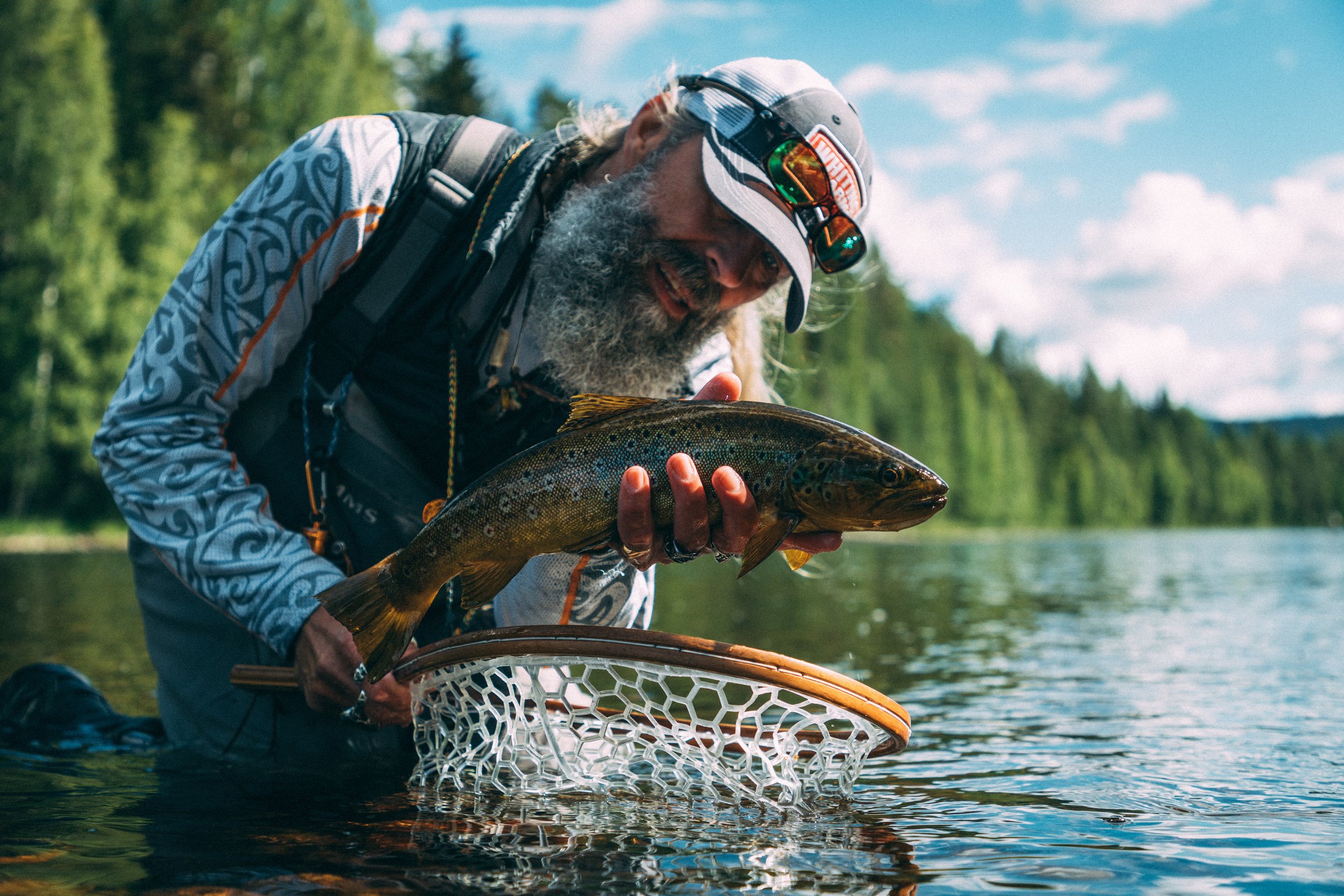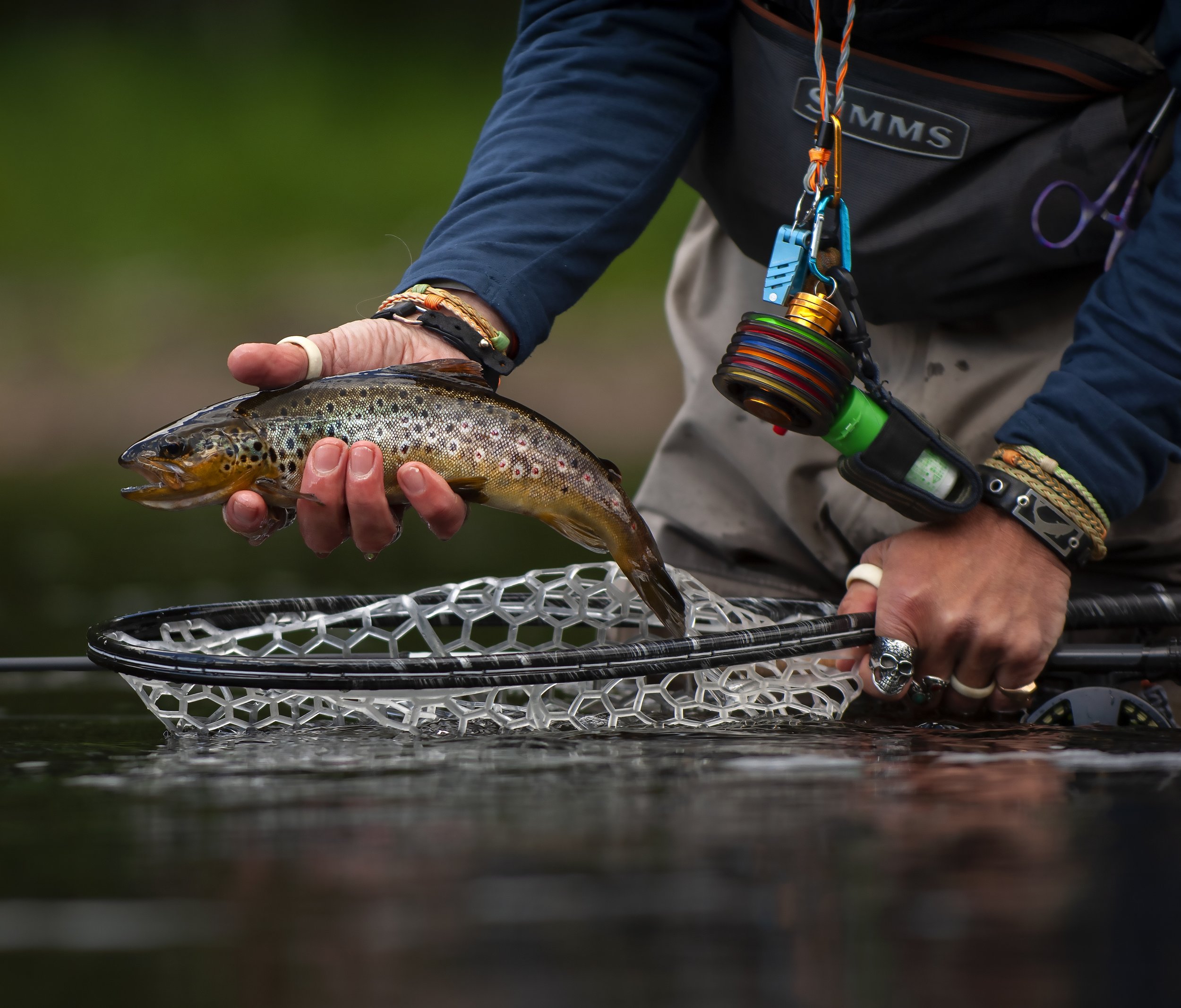
Stefan Larsson
Stefan Larsson
Photos: Ahrex Hooks, Stefan Larsson and a few good friends.
Choice of equipment. Rods, reels, fly lines, fly floatants, glasses and other useful items.
Rods - The choice of rod depends on what kind of water I intend to fish. When I fish a big river, I always use a 9’ 5wt rod. It allows me to make the casts I want to and also to handle bigger fish. Most of the time I use an Orvis 3F, which is a superb dry fly rod. You really can put a small size 20 Adams wherever you want with that rod.
For fishing smaller streams and creeks, with smaller fish, I prefer a shorter and lighter rod. My old Orvis Superfine Trout Bum 6’6” 3wt is an outstanding rod for smaller waters. A full flex rod with enough power to handle most casts and situations.
On occasion I end up in a small stream with big trout and that requires yet another rod, like an Orvis Superfine Touch, 7’6” 5wt. A 9’ rod will be too long for those treelined small creeks, but you still need a 5wt to handle the fish in a good way.
Reels – I use mostly Lamson reels on my 5wt rods. A bit expensive, I know, but for me it is worth it. Brilliant craftsmanship and I never had a single problem with any of them. The fact that they look good does not make things worse either. On the 3wt I prefer a Swede, Danielsson Midge. Just perfect for that small creek fishing.
Lines - Scientific Anglers is what I mainly use and there are two lines that covers most of my fishing today. VPT 2.0 is what I’d choose for the 5wt rod. A presentation line which is perfect for all kinds of overhead casts, very accurate when it comes to place your dry flies in tight spots. And if you need a longer cast, it’ll easily handle that too. For the lighter rods I’d chose the Creek Trout with a shorter, a little bit heavier head. It loads very quick and will allow you to make all those tough casts easier. The weight of the head will let you do 12 metre casts with only one or two false casts. On shorter casts one false is enough. When you’re drifting small dries in fast water that is a clear advantage.
Floatants – You bet! I’m a dry shake guy. I carry a small bottle of Gink, mainly used on deer hair flies, but I think I use up something like 16 cans of Shimazaki Dry Shake during a summer season.
I use mostly very small flies, that’s why. Except for a couple of weeks in June, I only fish dries in sizes 16-24. Sounds weird? Well, that’s what river life looks like here and I’m just matching the hatch.
Other stuff – Polarized sunglasses is a must. I wouldn’t make it another day without them. If you fish rocky rivers like I do, you need to see where you put your feet in the water. And when you got that sun in your eyes you need to be able to spot the riser ahead of you. After trying out a bunch through the years, I’m now using Costa sunglasses. Perfect fit and great lenses.
Otherwise I carry very little stuff with me when I’m out. A nipper around my neck, forceps, a tippet spool holder, floatant and a couple of tiny flyboxes – that’s it.
Leader material, build ups, length and knots.
Leaders – I use a tapered 4x 9ft nylon leader. To the leader I add like 50 cm of 5x nylon tippet material and then 50 cm of 6x fluorocarbon tippet material. The total length of the leader will be around 12ft, which I think is perfect for bigger rivers when using a 5wt rod.
For the smaller rods I use an 5x 7 or 8’ leader, adding 50 cm of 6x. I tie my leader to the fly line with a nail knot. If the fly line have a loop, I’ll cut it off. I just don’t trust loops. I use a surgeons knot when tying tippet material to the leader. Easy, fast and quite durable and if you practise, you can do it even after the sun’s gone down. An improved clinch knot is what I use to tie the fly to the tippet. I normally use leaders and tippet material from Trouthunter. They got a couple of leaders that are ”dirt colored” which makes them a bit less visible.
Note: If I should be in a situation where I need to cast a bigger fly or if I know I am casting to one of the big ones, I would of course go up in tippet size.
Approach and stealth.
– I consider this being one of most important things in fly fishing. When I get to a river, I take it very slow and I stay away from the water. Trout are very aware of everything happening around them. They will see you or your shadow or feel you if you move around, in the water or on the bank. Stay low and quiet and wait - and keep on waiting and watching. If you see a feeding fish, stay cool he’s not going anywhere.
Make up a plan. How do you get in a good position, where he won’t see you? What kind of cast do you want to do? Can you get close without stepping out in the water? What is he feeding on?
If you do the job first, you will have a good chance to catch that fish and maybe all you need is one cast. So, when you have a plan, be very careful when you start moving.
-When you think you are moving as slow as you can…halve that.
Reading the water.
– Reading the water is just as important as the approach, and by all means, in many ways the same thing. Learn to look at the water, locate seams, rocks, holes – everything. When you see rising fish, remember where you see them, what does it look like where they eat. Are there rocks, seams, foam lines or anything that could transport food into their mouth. Trout will definitely look for those places. As much food as possible, for as little work as possible – just like many humans.
Many of those places will also be places where they hangout even when they aren’t eating.
Casting ability. Which casts are essential?
- I’d say I am the man that spends most hours of all fishermen in my home river. I am also pretty sure I am the man who makes the fewest casts. One of the best ways to spook a trout is with a bad or misplaced cast. Why does this happen? Most of the time because we are too eager or we didn’t do ”the job” first, as I wrote earlier. If you take the time to prepare yourself, things will become easier and hopefully you will need fewer casts to catch your trout.
I usually do all my fishing upstream, using 6-12 metres of line and often in tight spots. This means that you have to use slightly different casts, and sometimes change your position in the water, since you don’t want to put your line over the fish. Reach casts can be very helpful as well as the ability to make just the end of your tippet change direction in the air and land where you want it to land. This helps you to get under or behind obstacles in the water or hanging out from the bank.
I use mid-air mends most of the time, when mending is required, so when the line lands on the water it’s already mended. Takes away some of the disturbance we create on the surface while mending the line when it’s on the water.
Entomology, what should we know?
- Since we are trying to imitate real insects, a certain amount of knowledge is clearly very important. Casting the wrong bug in a river with feeding trout can be very frustrating, as we all know. There are so many books to read on the subject that will get you on the way. But I also feel that being out there looking at the real ones is just as important.
Get your hands in the water, have a look at them. Sizes, colors, wings, everything. Check out all the stages in their life cycle. Try to understand a bit of their life in the water. A baetis in my river will be olive and about size 18-20, but in another river not too far away from here it could be brown and size 16.
So, get to know your water.
Rise forms. Can they tell us something?
- Definitely! By watching risers you can tell how they are feeding and what they are feeding on. If they are eating duns, emergers, cripples, spents or nymphs. Be patient, sit down, take your time and look closely on that water and those risers. Are they feeding on top of the water or sub-surface? What insects can we see? Are there a lot of them on the water or very few?
Learn to adapt to the current prerequisites.
Fly selection, size, shapes, materials, which flies are essential?
- This is a tough one, since it could be very different in different rivers.
I usually tie and fish with very small flies. Insects in my home waters are small so I had to adapt to that from young age. I also spend a few fall weeks every year in Montana and Colorado, USA, where bugs can be even smaller.
Materials I love to tie with are biots and quills, Whiting saddle hackle, Elk and deer hair and CDC. All my flies are tied on barbless hooks, of course.
So, I guess different baetis patterns are what I use the most. Mainly olive/grey/brown parachutes but also a few cdc-emergers and cripples in small sizes, 16-24 (same colors). I use a lot of deer/elk hair caddis patterns as well, mostly sizes 16-18. Add a few darker, slightly bigger, parachutes/emergers and you’re all set. Early season sulphurs are the biggest flies I fish around here, and we’re talking size 12-14, though it’s only for a few weeks in June.
My favourite fly has to be one of the tiny ones. Exactly which one, I can not say.
What about a handful?
Presentation and drifts.
- A drag-free drift is of course what we all want. To get the fly into that feeding line and have it staying there. A short good drift is definitely preferred since longer drifts always seem to get caught by the current. Fishing upstream helps, but you have to learn how to use your other hand to keep that line tight. Too much slack could be devestating when that big one eats the fly and takes off.
Upstream or downstream?
- I always fish upstream. As we all know, the fish are always looking upstream and if you are very careful you can get closer than you think. That will give you shorter, more accurate casts and better control.
I actually caught fish using only my net a couple of times, while guiding and very slowly moving upstream, and that really shows that if you are careful enough, you can get very close.
Of course I do end up in situations now and then where I have to drift a fly downstream. That’s very rare in a big river but it will happen when you fish those small, winding creeks in the woods.
Fighting fish.
- I always try to fight the fish as hard as I can and make the fight as short as possible. As I said before, I fish with small flies and light tippets, but a 6x tippet can land some big fish if you handle things right. Keep it tight and remember that you have to be in charge of the fight. Leave it to the trout and you’re going to lose. If he runs, let him run, but when he slows down you take every inch back immideately. Try to be in control of every move. Most of the time the bigger fish move downstream. Always be prepared to go with him, it will keep you in control and help you avoid unforeseen obstacles and situations.
















